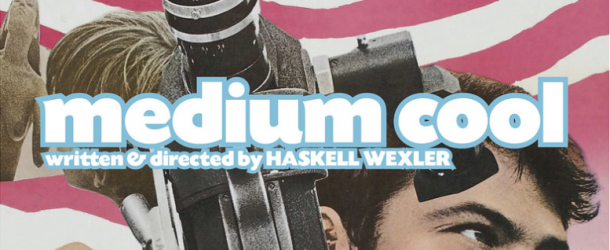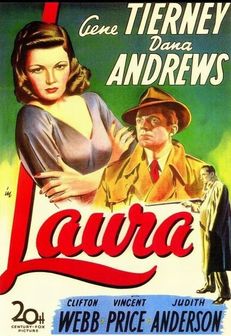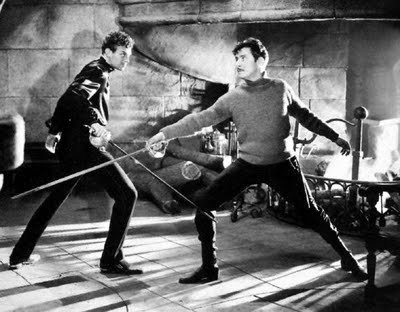|
60. To Be or Not to Be (1942) “What you are, I wouldn’t eat.” "How dare you call me a ham!” I first saw Carole Lombard in the film 20th Century, where I thought she was amazing both for her dramatic skills and comedic timing. Interested, I sought out the Ernst Lubitsch masterpiece To Be or Not to Be, where she is just brilliant. Playing alongside Jack Benny, the film glides along and still works perfectly some 70 years after its creation. There is also a distinctly modern, and hilarious, moment in that last plane sequence where ‘Hitler’ gives one last order to his loyal guard. 59. Groundhog Day (1993) A perfect blend of gentle comedy and philosophical investigation, this provided Bill Murray with one of his greatest parts, as a man stuck in time and space. One of those rare films that grows funnier, and deeper, the more times you see it. 58. Singin’ in the Rain (1952) I am not terribly fond of musicals, but who could argue with this one, Gene Kelly's greatest work. Inventive all the way through, then takes a sudden turn during the finale into jazz, accompanied by Cyd Charisse’s legs. 57. The Man Who Fell to Earth (1976) If there is a universe in which Nicholas Roeg and David Bowie didn’t make a movie together, then I prefer not to live in it. Stark, ultimately depressing, but hypnotic in the way Roeg’s best films tend to be. Bowie, perfectly cast, is mesmerizing.
54. The Public Enemy (1931) It isn’t true that Martin Scorcese invented the gangster picture. Paul Muni and Howard Hawks did Scarface long before Al Pacino did, and Jimmy Cagney had this film, The Public Enemy, when talkies were still relatively fresh. Cagney shoves a grapefruit into a Mae Clarke’s face and then shoots a horse to death because it pissed him off. If you’ve never seen Cagney in a movie before, prepare to be obsessed. 53. Network (1976) This is the picture that successfully predicted what television would become, and why – it was also the picture that lost out to Rocky for the Oscar. As director Sidney Lumet said, “Boo.” Featuring one of the all-time great scripts from Paddy Chayefsky and played out by an ace cast with relish. 52. Breathless (1959) One of the most definable films of the French New Wave, this is dazzling from start to finish, as director Godard and writer Truffaut spit back the pop American gangster films they loved into a soufflé of their own. Jean Seberg was one of the most gorgeous creatures ever to appear on Earth, and she was rewarded with sadness and tragedy – the film makes it all seem like a terrible portent. 51. Sorcerer (1977) The film that did more to kill the Auteur decade of the 70’s probably more than any other, William Friedkin wasted millions and made none on this bizarre remake of Cluzot’s The Wages of Fear. Roy Scheider is perfect as the gangster seeking anonymity in Latin America, and together with the incredible tension and Tangerine Dream score, makes this journey an unforgettable one. One of the few remakes to be better than the original, in my opinion, and another film that gets better with repeat viewings.
0 Comments
70. Alien (1979) If you’re going to make a movie about a monster in outer space, this is the way to do it. The effects hold up marvelously and the cast is one of the best ever assembled, featuring Yaphet Kotto, Tom Skerritt, Veronica Cartwright, Ian Holm, Harry Dean Stanton, John Hurt, and of course a young Sigourney Weaver. 69. Through a Glass, Darkly (1961) I love The Seventh Seal and Persona as much as anyone, but this is one of the two films that really stay with me from Bergman. A typically dark drama about a brother/sister/father relationship, this film deals with spiritual issues unseen in most films – especially the notion that if there is a God, it may not have any human connection to us whatsoever. 68. Last Year at Marienbad (1961) Being a fan of the literary work of Alain Robbe-Grillet, I am probably more inclined to be patient with this film’s depiction of spiritual emptiness in wide shots of corridors. The director, Alain Resnais (who also made the celebrated Hiroshima Mon Amour) didn’t entirely share the author’s vision, but the film does evoke Robbe-Grillet’s style very effectively. Surreal, beautifully shot, and dreamlike in execution. 67. Point Blank (1967) John Boorman wore his New Wave influences openly in the making of this crime picture, resulting in a weird, sometimes choppy but compelling revenge drama. Lee Marvin walks through the film knocking down doors and knocking over people on his single-minded quest, which ends only in ambiguity. And the weird was just getting started for Boorman, who has one of the more unique filmographies around. 66. Cross of Iron (1977) A WWII picture with an unusual point of view: Sam Peckinpah’s distinctive style is applied to this drama about German soldiers on the Russian front. The film doesn’t deal with the war as such, but is down on the ground with the grunts, and what emerges is a macho battle between supersoldier Steiner (James Coburn) and his commander played by Maximilian Schell. For anyone needing an antidote to Saving Private Ryan, this is the one. 65. Brazil (1985) Terry Gilliam’s quasi-masterpiece is big, sprawling, not always on-point, but often brilliant and occasionally unforgettable. Gilliam has always been one of my favorite filmmakers because of his unique vision and indefatigable chutzpah. I may not love everything he makes, but – as with David Cronenberg – I always want to see his films. 64. Wild Strawberries (1957) Victor Sjostrom, as the elderly professor reflecting back on his life, gives a devastating performance; of all Bergman’s films, this one comes back to me most often. A meditation on God, life, the universe, and everything, but without the dreariness that description might suggest. Instead, this is a glorious film. 63. Strozek (1977) Werner Herzog, the legend, has made so many great films and documentaries that he – like Kubrick and Antonioni – would dominate this list if I didn’t arbitrarily set a limit. A dazzling critique of modern capitalism, and featuring one of the greatest ending sequences of any film ever made. 62. Au Revoir Les Enfants (1987) Louis Malle’s coming-of-age story set in WWII left me bawling for an hour afterward. I understand that doesn’t sound like a recommendation, but it is. 61. Red River (1948) Howard Hawks, my favorite American classic Hollywood director, cast John Wayne as the heavy in this brilliant Western. Montgomery Clift plays his prodigal “son,” and their conflict sets the table for this cowboy drama. The movie that caused John Ford to remark, “I didn’t know the sonofabitch could act,” about Wayne. Dazzling entertainment. 80. Jackie Brown (1997) Tarantino’s Pulp Fiction changed the rules for Hollywood pictures, but this is one is deeper and more textured, while retaining the flashy wit. Even better, the two central performances, by Pam Grier and Robert Forster, are powerfully moving. 79. They All Laughed (1981) A small masterpiece of seemingly incongruous parts, Peter Boganovich’s film has terrific, lived-in performances from a game cast, and a sense of lovely melancholy from first frame to last. Overpowered at the time of release by the shocking death of his then-girlfriend Dorothy Stratten, the film tanked at the box office. Loose, informal, and entertaining in an old-fashioned way, with Ben Gazzara, Colleen Camp, John Ritter, and Audrey Hepburn at their most likable. 78. Miller’s Crossing (1990) I’ve often thought this was the best script I’ve ever read. The film, somehow, isn’t as good as the script – never been able to put my finger on why. Still a great picture, however, with brilliant dialogue equal to the noir films that it consciously echoes. Incredible cast, photography, and ending.
73. The Big Red One (1980) There are lots of Samuel Fuller pictures that could have made this list, including the great Shock Corridor, but this one always stays with me. Fuller put himself in the film – the cigar-chomping Robert Carradine in a scene-stealing role – and Lee Marvin lends his gravitas of having actually served in WWII. Uneven and episodic, but haunting and real. 72. Medium Cool (1969) A brilliant, fractured, film with a documentary quality, Medium Cool lacks a traditional narrative but contains an amazing slice of reality. Famously shot during the riots at the 1968 Democratic convention, this is as striking a historical document as it is a movie. An amazing film featuring a terrific Robert Forster in the lead, nearly thirty years before his "comeback" role in Jackie Brown. 71. The Ninth Configuration (1980) Hilariously profane, unrelentingly bizarre, and ultimately Catholic, William Peter Blatty’s picture is one of the most unique film experiences ever made. Stacy Keach is the best effing psychiatrist since Jung, and he is tasked with helping discern whether a group of loonies are faking or barking. Includes an unforgettable sequence on the Moon and an insane bar fight. Seriously, check this thing out. 90. Ed Wood (1994) Tim Burton’s greatest film, in my opinion, from a terrific screenplay and a lot of love for the bad-movie genre. Depp is great, Martin Landau is incredible and the whole movie maintains its odd, quirky-in-a-good-way tone throughout. 89. Youth of the Beast (1963) Seijun Suzuki made crazy, stylish pictures about gangsters in a kind of fantasy world. This one is probably my favorite because there are several places where you can see where Tarantino stole stuff from, and because of Jo Shushido’s terrific performance. Bright colors, edgy violence, and a couple of dry quips – it’s got an energy to it that’s infectious. 88. The China Syndrome (1979) During the Seventies, it seems like Hollywood was able to knock out adult dramas at will for a while; of course we all know what changed that. One of the most intense films I’ve ever seen; it will leave you thinking for some time after you see it. Also interesting in that there is no score, which adds to the realistic tone. (As William Goldman pointed out, Michael Douglas is a hell of a producer; check out his credits, which include this picture). 87. Solaris (1972) Decidedly not the insipid Steven Soderbergh remake, but Andrei Tarkovsky’s original; if you haven’t seen any Tarkovsky, it’s worth the effort to catch as many as you can. A slow, surreal, fascinating journey, culminating in a final shot that is justly famous. Dreamlike and thought-provoking.
82. Seven Days in May (1964) One of JFK’s favorite books. Kirk Douglas happened to be at a dinner party in D.C. and told Kennedy he wanted to make a film out of the book. Kennedy proceeded to tell Douglas just how important he thought the story was; given the content, it’s easy to see what he meant. Unfortunately, he never got to see it.
81. Le Cercle Rouge (1970) Alain Delon, this time sporting a mustache, and the great Yves Montand, in a heist film directed by Jean-Pierre Melville. What more do you want?
|
AuthorThis is Joe Green's blog. Archives
August 2021
Categories |










 RSS Feed
RSS Feed
